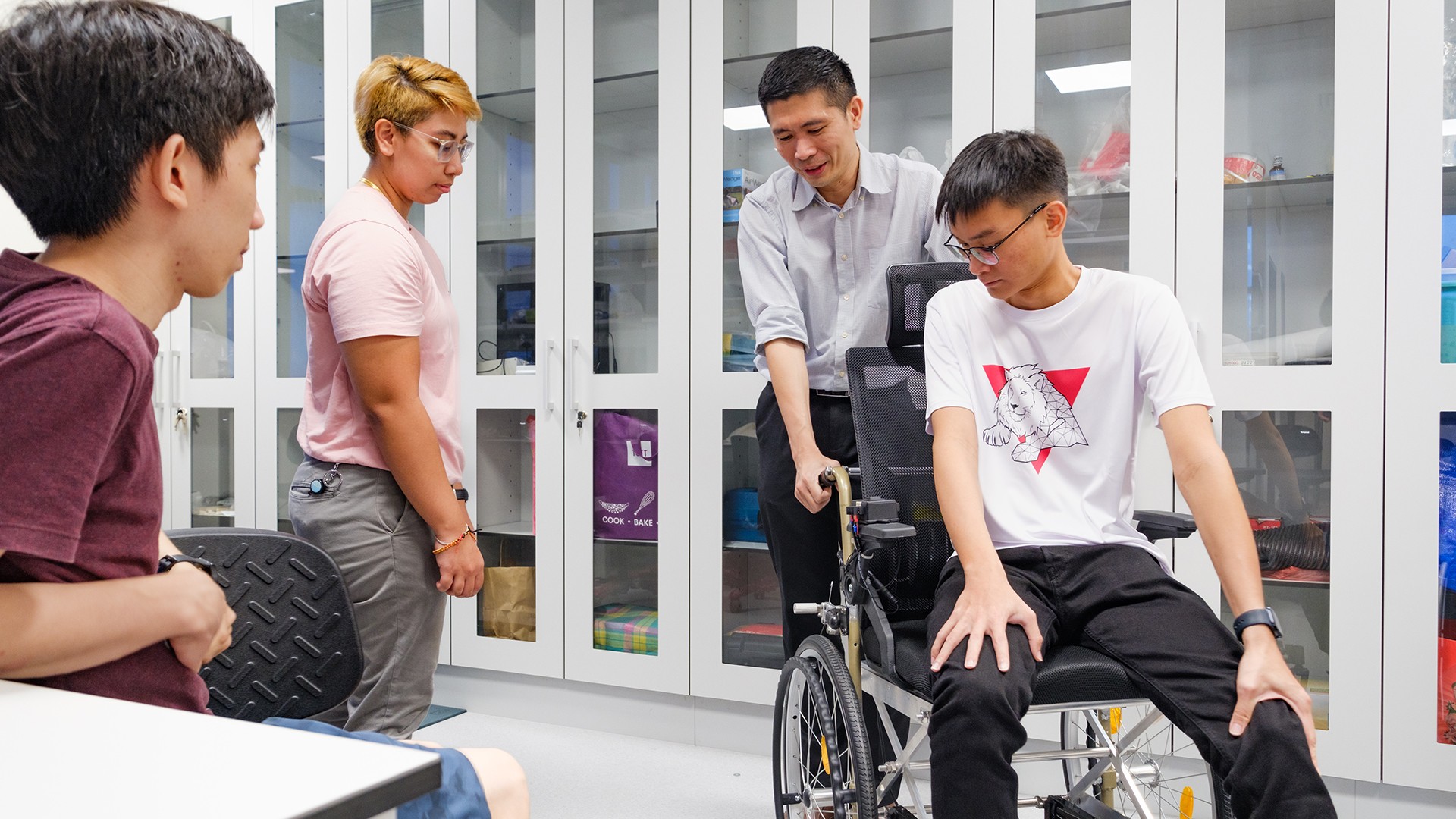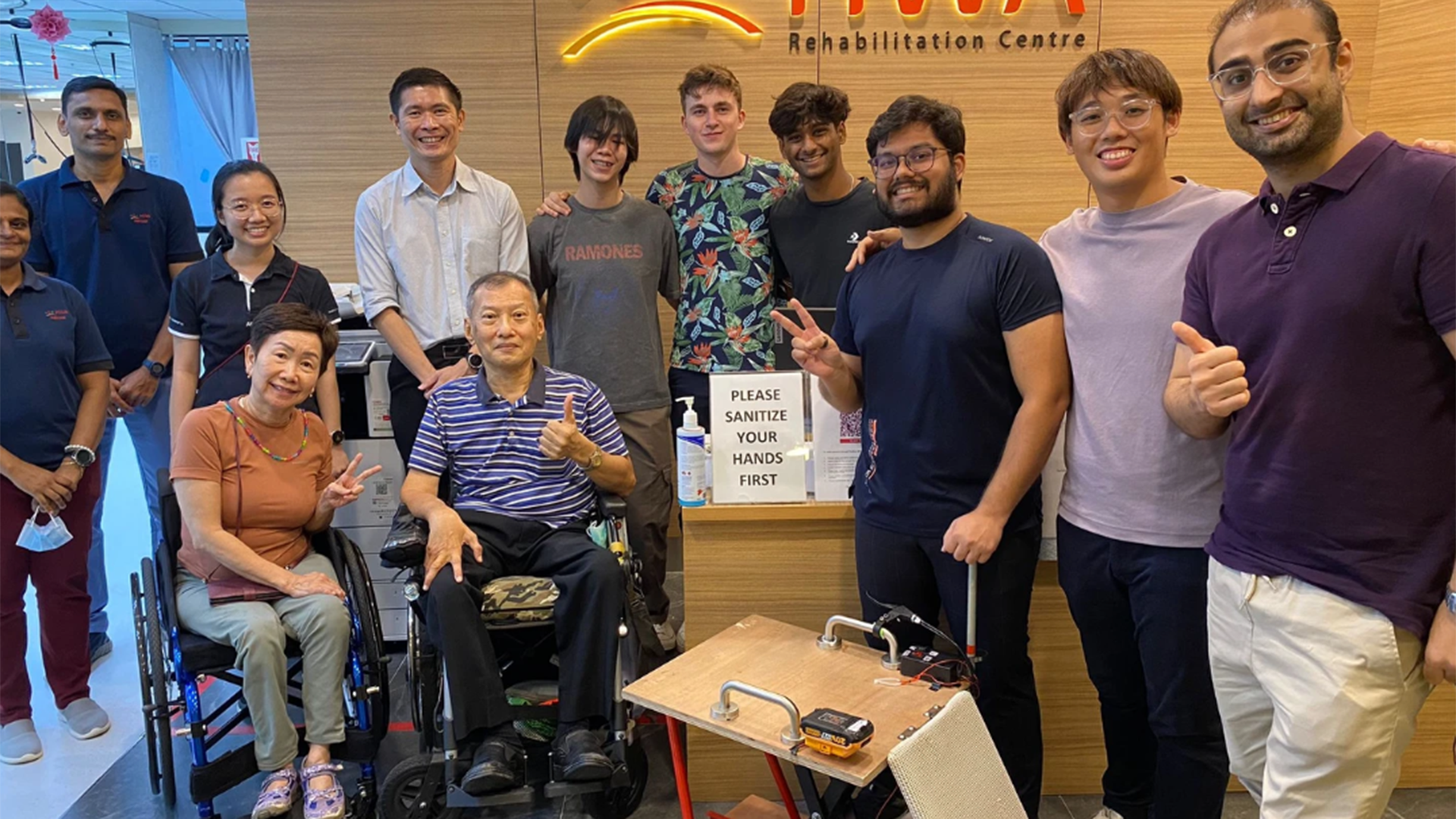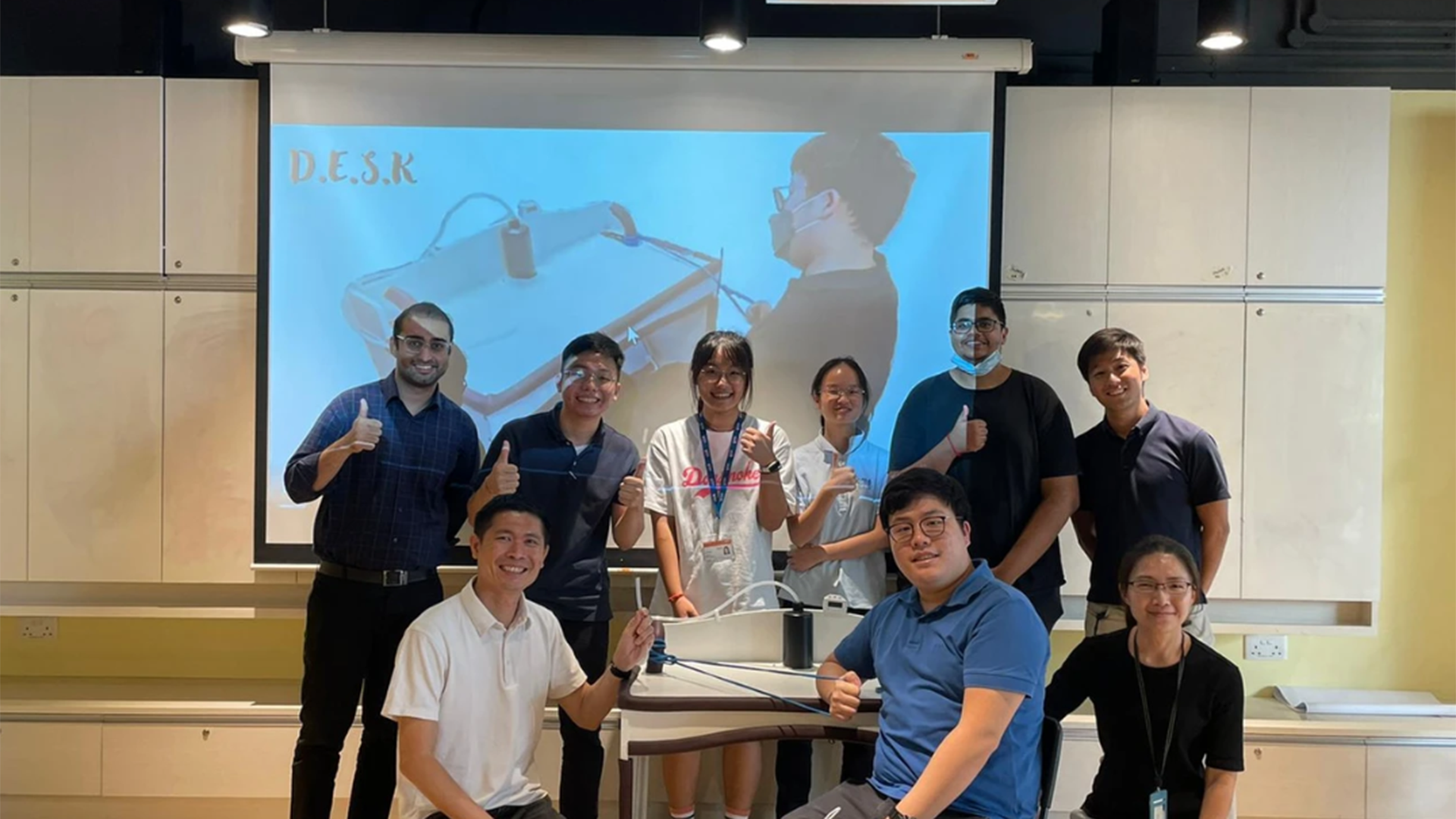From height-adjustable wheelchairs to robotic arms: Empowering persons with disabilities one design solution at a time

 In this series, NUS News highlights the University’s innovative teaching strategies, spotlighting the educators breathing life into the lessons in unique and innovative ways.
In this series, NUS News highlights the University’s innovative teaching strategies, spotlighting the educators breathing life into the lessons in unique and innovative ways.
Not many would think twice about the process of moving from a sofa to a dining chair. But for double-leg amputees, the otherwise effortless task of shifting between furniture of varying heights is not just a challenge but also a fall risk as they can only use their upper arm strength to support the transfer from their wheelchair.
Wanting to make a difference to persons with disabilities (PwDs) who could be struggling to live independently, Dr James Kah found himself drawn to the field of assistive technology.
It is a change from his usual research on nanomedicine that focuses on developing treatments for diseases, a pursuit he has been dedicated to since receiving his PhD in 2009 and continued even after he joined NUS to teach. However, despite the many years invested, he could not see the impact of his work beyond his journal publications.
“So what if I could eliminate tumours in mice? I struggled to see the impact translated into humans,” recalled Dr Kah, a Senior Lecturer in the Department of Biomedical Engineering (BME) at the NUS College of Design and Engineering.
What brought him closer to the end-user was assistive technology, an aspect of biomedical engineering.
“The fact that assistive technology for PwDs is very bespoke was my greatest motivation,” he added, explaining that this meant that they were not easily available and often expensive.
To plug that gap, he put together the Assistive Technology for Persons with Disability course in 2020. It prepares Biomedical Engineering students to be proficient in understanding and applying various engineering solutions to mitigate challenges faced by PwDs.
But one thing he knew for sure was that his students should not be stuck in the classroom solving hypothetical problems associated with disability. So, he went a step further to adopt a community-based learning approach in the module where students were linked up with community partners like the Singapore Association of the Visually Handicapped to solve real-life challenges.

Putting school projects to good use
One problem he often encounters as a lecturer is how many student projects go to waste after grading – “even though they can be very useful and cost-accessible, especially those that are very simple and low-tech,” he said.
So he went a step further to create the BME for Good – or bGood – initiative that supports students and pushes them to develop their projects beyond what is solely needed for grading. The aim is to manufacture and eventually deploy them for use within the PwD community.
One such project is the Heighty Mighty, where students worked with a double amputee, Mr DeCosta, to learn about the difficulties he faced. “For him to transfer himself from the wheelchair to the sofa, the bed, or the kitchen chair was a challenge because of all the different heights,” Dr Kah explained. They also realised that without high head rests, the wheelchairs were not comfortable for users.
To overcome this, the students replaced the seat of a second-hand wheelchair with one of an office chair, before implementing a mechanism to adjust its height with the press of a switch. This would allow wheelchair transfers to happen along the same horizontal axis, making it both safer and easier for users.
It might not be groundbreaking, but the project provided the client a height adjustable wheelchair for $200 instead of up to the $8,000 that it would take to buy and ship one from overseas.
Getting students out of the classroom
While traditional methods of giving lectures and problem statements to students help them build a strong foundation in theory, Dr Kah believes it is far more important for students to go out, meet PwDs, and solve their real-world challenges.
“It makes the problem statement very real, and not just another hypothetical problem given by professors,” he explained.

Through interacting with PwDs while working on the projects, students “get to feel what PwDs encounter in their lives, which makes this course all the more rewarding, especially since you know that your invention will play a better part in improving their lives,” said Ong Jun Kiat, a third-year student who took the module in AY22/23 Semester 1.
Gabriel Wong, who took the module in the same semester, shared that getting out of the classroom and working with community partners allowed him to “appreciate the nuances of the design process”.
“Working on our project also exposed my group members and I to prototyping skills and knowledge that were not explicitly taught in class. This allowed us to grow as engineers and as independent learners,” the third-year student added.
Students also gain a sense of fulfilment from being able to see their projects through and witness its impact on the community.

Such experiences are also what Dr Kah relishes. For instance, watching the eyes of a girl with cerebral palsy sparkle as she fed herself for the first time using a robotic arm designed by the students was one memorable moment for him.
“You can see the joy and excitement in her. Her teacher told us that they had never seen her so enthusiastic when eating,” he said recalling the past project. “It may have been two years ago, but I still remember it vividly.”
Dr Kah is intent on expanding the programme, with a goal to transform it into NUS’ in-house assistive technology hub in the future. So far, he has worked with 10 community partners and deployed five projects into the community, including those designed for seniors. The device Grip Buddy, for instance, helps stroke survivors to open and close food jars. What he needs now are donors and supporters to fund more student projects to be deployed to the community.
For now, students are enjoying the “well-rounded” experience to both learn and apply their knowledge to real-world issues.
M Farhana, a fourth-year student who took the module in AY21/22 Semester 2, shared how Dr Kah invites experts from various fields of disability to share about their respective areas of disability. “This helps us gain a better understanding and further insight into different topics,” she said.
With the rapidly changing world, whether in the way students learn or how the industry evolves, Dr Kah believes it is important for educators to step out of their comfort zones when developing their courses.
“When we start to think of new ways to engage and teach students, it is also in itself a process of self-development. Whether we like it or not, it is important,” he said.


